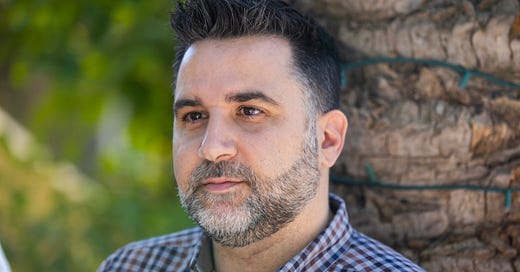A winter of austerity? Why the Braves COULD sit out free agency this year
The Atlanta Braves have freed up a lot of salary space since the season ended...but do they intend to use it?
Almost everything the Atlanta Braves have done since the season ended in San Diego has been to free up payroll space.
In chronological order, here are the major moves for President of Baseball Operations Alex Anthopoulos so far this offseason:
A trade of outfielder/designated hitter Jorge Soler to the Los Angeles Angels, with righthander Griffin Canning coming back to Atlanta. SAVINGS: $26M over two years
A restructure of the contracts for Reynaldo López and Aaron Bummer. SAVINGS: $4.25M for 2025
Declining the club option on catcher Travis d’Arnaud, who subsequently joins Soler (and manager Ron Washington) with the Angels. FOOTNOTE: d’Arnaud also brings former Braves catching coach Sal Fasano with him, as well. SAVINGS: $8M for 2025
A non-tender of outfielder Ramón Laureano and starter Griffin Canning. SAVINGS: an estimated $11.2M (MLBTR arbitration projections)
Alex went on 680 The Fan soon after the d’Arnaud option was declined and discussed his reasoning, explaining that with Spencer Strider and Ronald Acuña Jr. not expected to be ready for Opening Day, the Braves needed the financial flexibility to address the rotation and outfield this winter.
Flexibility achieved - the Braves are projected (per FanGraphs) to have a CBT payroll of just over $217M, giving the team close to $60M in spending available if they spend to last year’s limit, which was juuuust shy of the third CBT threshold of $277M.1
But, what if they’re not planning on resuming that level of spending?
There’s a financial advantage to be had if they don’t - resetting the CBT. Base rates on a first-year overage is 20%, which raises to 30% in year two and 50% in year three and all subsequent years.2 But dropping below the base threshold for a single season resets that whole structure.
Could that be what Atlanta’s trying to do here?
It’s important to clarify here that I have no inside knowledge of this - this is all speculation and connecting the dots to a logical, if unlikely, conclusion. Alex’s public comments have been that payroll is going up next year, as it has in almost every single year he’s been running the front office.
Here’s AA discussing that at the end-of-year press conference:
(It’s worth pointing out that while this is also the press conference where we were told the entire coaching staff would be returning and that the trio of Bummer, Ozuna, and d’Arnaud were all in a position to have their options picked up, AA also clarified at the beginning of the meeting that these were their positions right now, just two days after the season ended, and before they actually had a chance to meet and discuss all of this stuff. Unlike some, I don’t consider AA to have either deliberately lied or unintentionally misled us in this press conference, but rather changed their minds once they sat down and looked at everything.)
But what if the Braves actually wanted to reset the luxury tax?
That $60M to reach last year’s level of spending suddenly becomes just $23M, which really is $20M when you consider the fact that the front office likes to leave a few million available for in-season adds.
It’s important to note that the concept of taking a step back from spending to reset the tax isn’t a foreign concept to even perennial contenders. The Los Angeles Dodgers spent three seasons under the tax, from 2018-2020 (although they would have been over in 2020 had David Price not opted out of the shortened season) and won a World Series during that span. They were also in a position to reset it again in 2023 were it not for Trevor Bauer’s suspension being modified on appeal and their payroll going from $230M (against a limit of $233M) to $252M after his prorated $22.5M was put back on the books.
If the Braves do, in fact, drop below the limit, it’s to save significant money in the future. Reminder, if they go over the CBT again this year, it’s a 50% overage on every dollar. A $10M salary costs $15M in actual cash expenditures.3
But if you enforce austerity now, that all starts over at 20% next season.
I’m not saying I’d do it, mind you, but I understand. With financial decisions looming down the line - DH and closer are both vacated after 2025, Sale’s club options are up after 2026, and both Ronald Acuña Jr. and Ozzie Albies have only club options remaining at that point - there’s some more work to be done to lock in the next wave of continuity as we approach the back half of the decade.
(As always, if you’re an audio/visual learner, we discussed this on today’s podcast.)
It was literally just shy, with FanGraphs estimating Atlanta’s final CBT figure at $276,995,508 against a $277M limit.
There’s also a 12% surcharge for passing the second threshold, but the surcharges don’t escalate in subsequent years until you break the third threshold and even then it’s just a move from 42.5% to 45%. The draft pick punishment after that third tier - having your highest draft pick moved back 10 spots, which knocks out a lot of your draft pool - is worse and more expensive than the 2.5% increase, IMO.
Technically, if the AAV is $10M then the tax would be $5M and it’s $15M total. If you front or backload the deal, then the tax figure is different, but we’re trying to convey the basic idea here.



